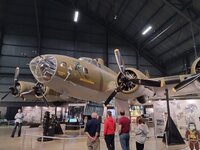Spectre311
Airman
With the arrival of the B-17F how long did the "E" stick around in the European theater? It was quite prominent in the Pacific and if i recall correctly, North Africa as well. While I can find some photos of them in Europe, I'm unable to figure out how long they were there before they were replaced by the newer "F" and "G" models or if they managed to soldier on until VE day.

